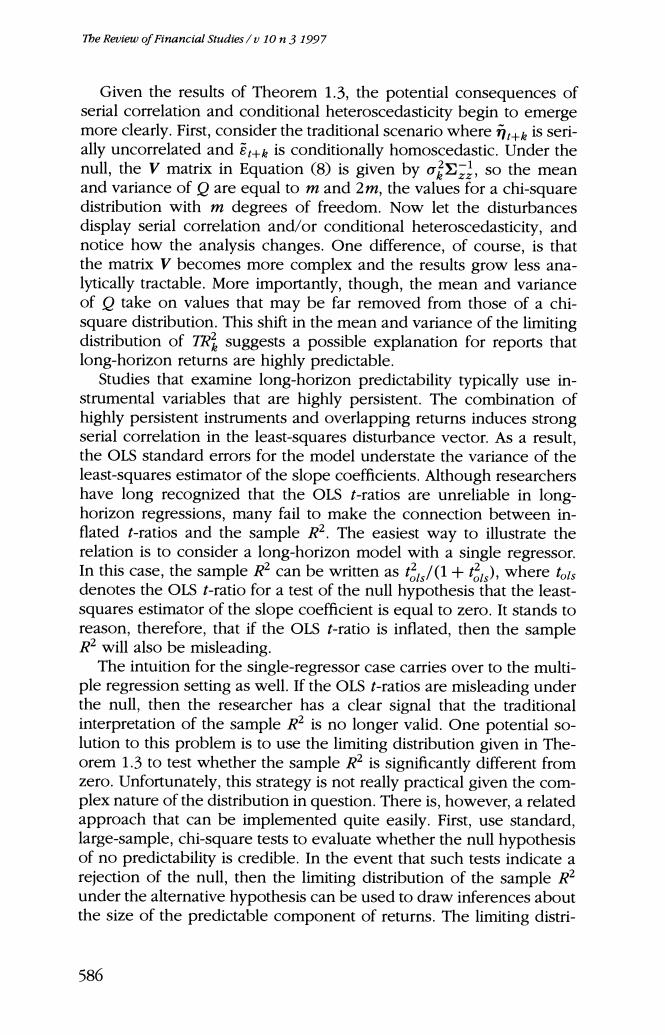正在加载图片...

The Review of Financial Studies/v 10n 3 1997 Given the results of Theorem 1.3,the potential consequences of serial correlation and conditional heteroscedasticity begin to emerge more clearly.First,consider the traditional scenario whereis seri- ally uncorrelated and is conditionally homoscedastic.Under the null,the v matrix in Equation (8)is given by so the mean and variance of o are equal to m and 2m,the values for a chi-square distribution with m degrees of freedom.Now let the disturbances display serial correlation and/or conditional heteroscedasticity,and notice how the analysis changes.One difference,of course,is that the matrix V becomes more complex and the results grow less ana- lytically tractable.More importantly,though,the mean and variance of o take on values that may be far removed from those of a chi- square distribution.This shift in the mean and variance of the limiting distribution of TR suggests a possible explanation for reports that long-horizon returns are highly predictable. Studies that examine long-horizon predictability typically use in- strumental variables that are highly persistent.The combination of highly persistent instruments and overlapping returns induces strong serial correlation in the least-squares disturbance vector.As a result, the OLS standard errors for the model understate the variance of the least-squares estimator of the slope coefficients.Although researchers have long recognized that the OLS t-ratios are unreliable in long- horizon regressions,many fail to make the connection between in- flated t-ratios and the sample R2.The easiest way to illustrate the relation is to consider a long-horizon model with a single regressor. In this case,the sample R2 can be written asts/(1+),where tols denotes the OLS t-ratio for a test of the null hypothesis that the least- squares estimator of the slope coefficient is equal to zero.It stands to reason,therefore,that if the OLS t-ratio is inflated,then the sample R2 will also be misleading. The intuition for the single-regressor case carries over to the multi- ple regression setting as well.If the OLS t-ratios are misleading under the null,then the researcher has a clear signal that the traditional interpretation of the sample R2 is no longer valid.One potential so- lution to this problem is to use the limiting distribution given in The- orem 1.3 to test whether the sample R2is significantly different from zero.Unfortunately,this strategy is not really practical given the com- plex nature of the distribution in question.There is,however,a related approach that can be implemented quite easily.First,use standard, large-sample,chi-square tests to evaluate whether the null hypothesis of no predictability is credible.In the event that such tests indicate a rejection of the null,then the limiting distribution of the sample R under the alternative hypothesis can be used to draw inferences about the size of the predictable component of returns.The limiting distri- 586